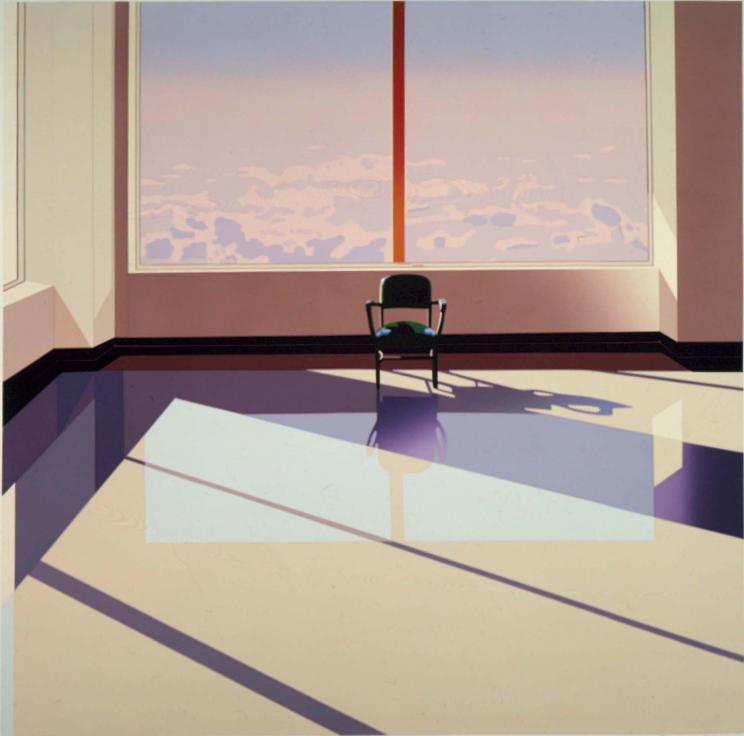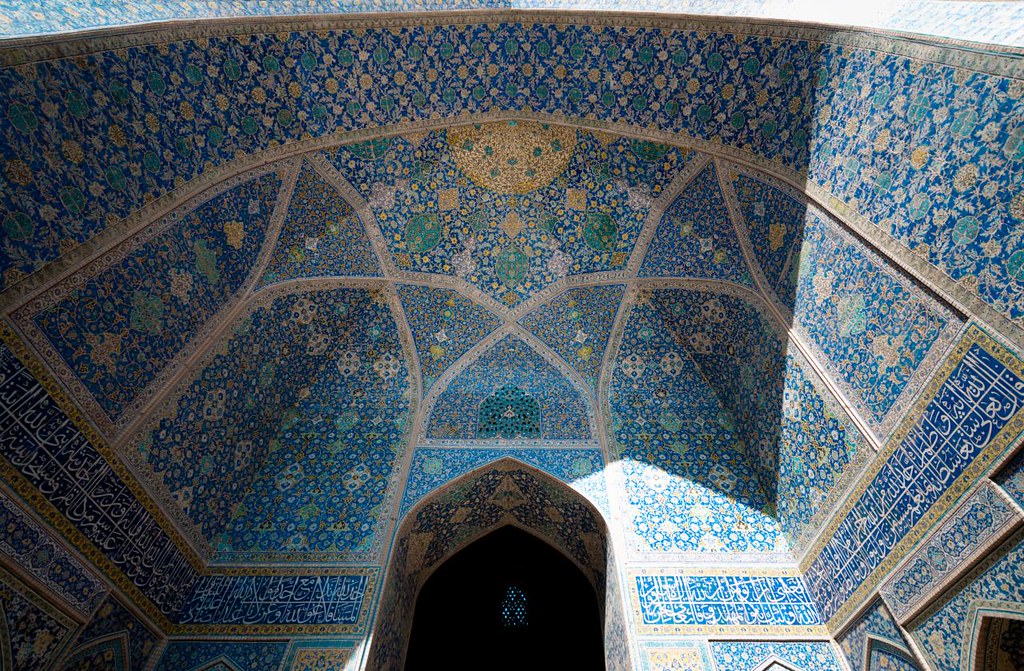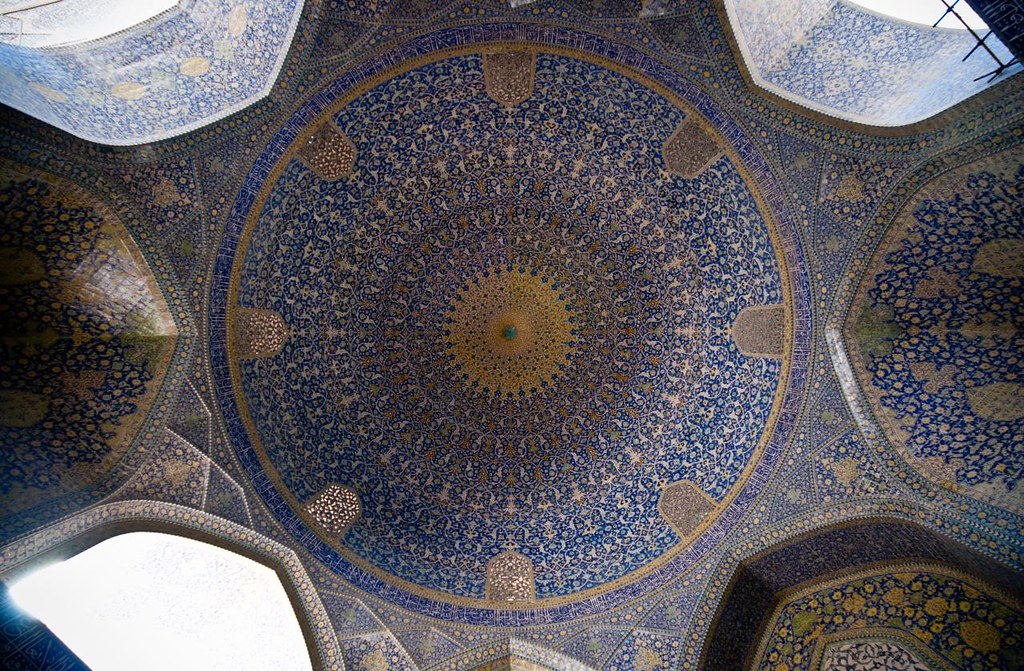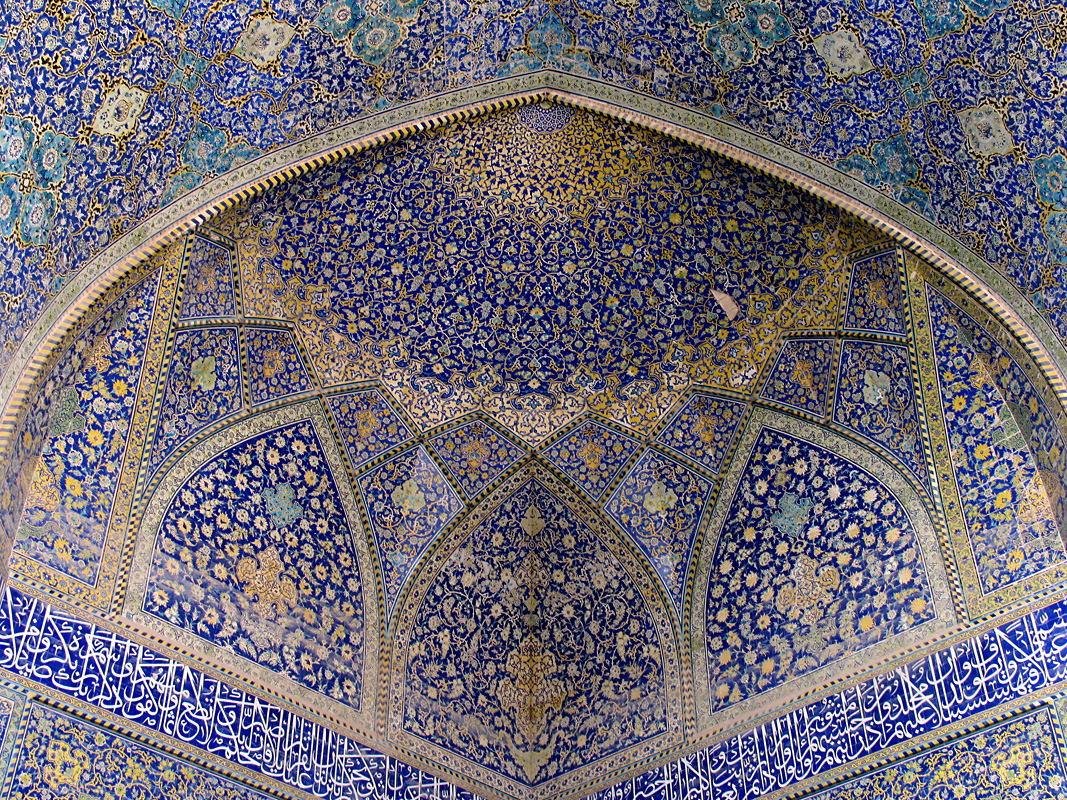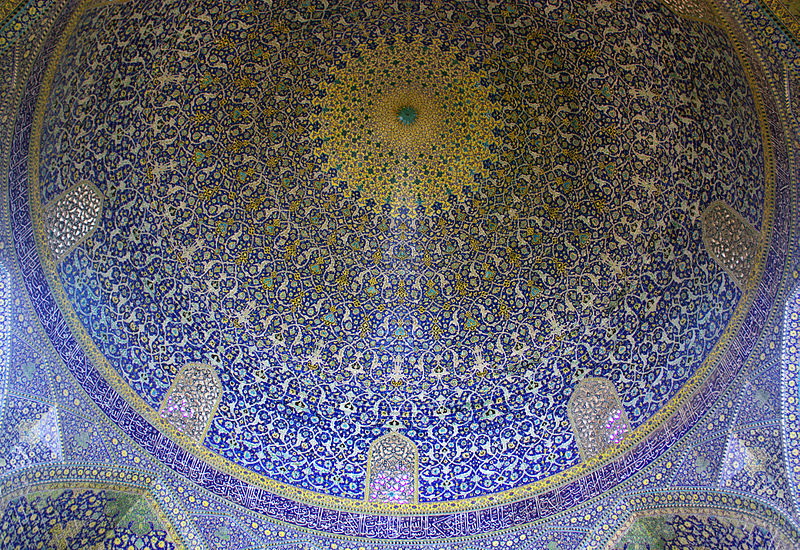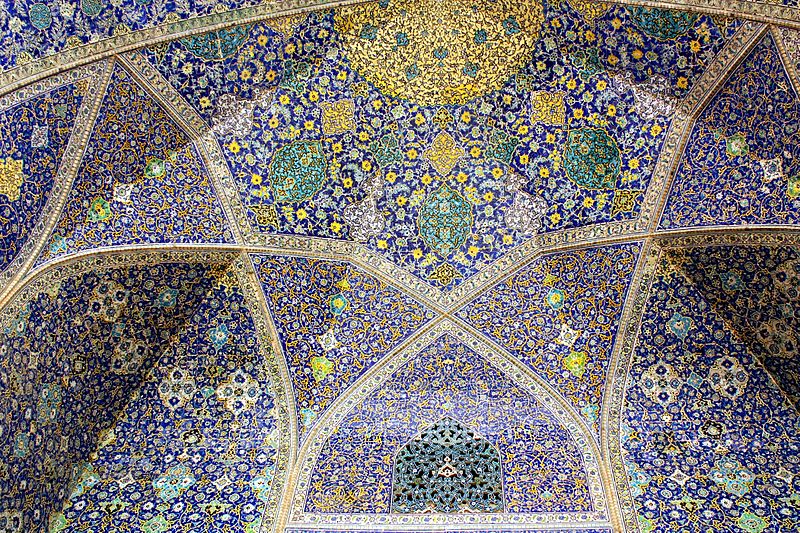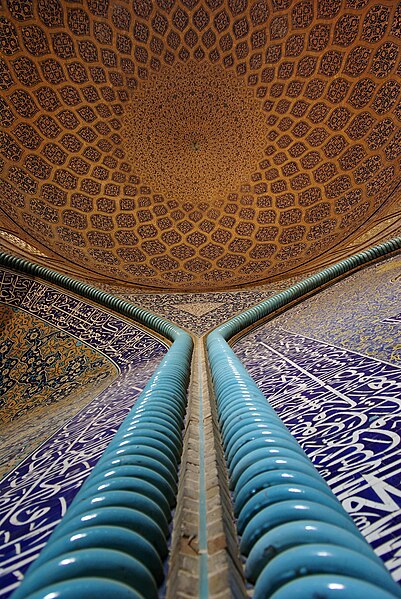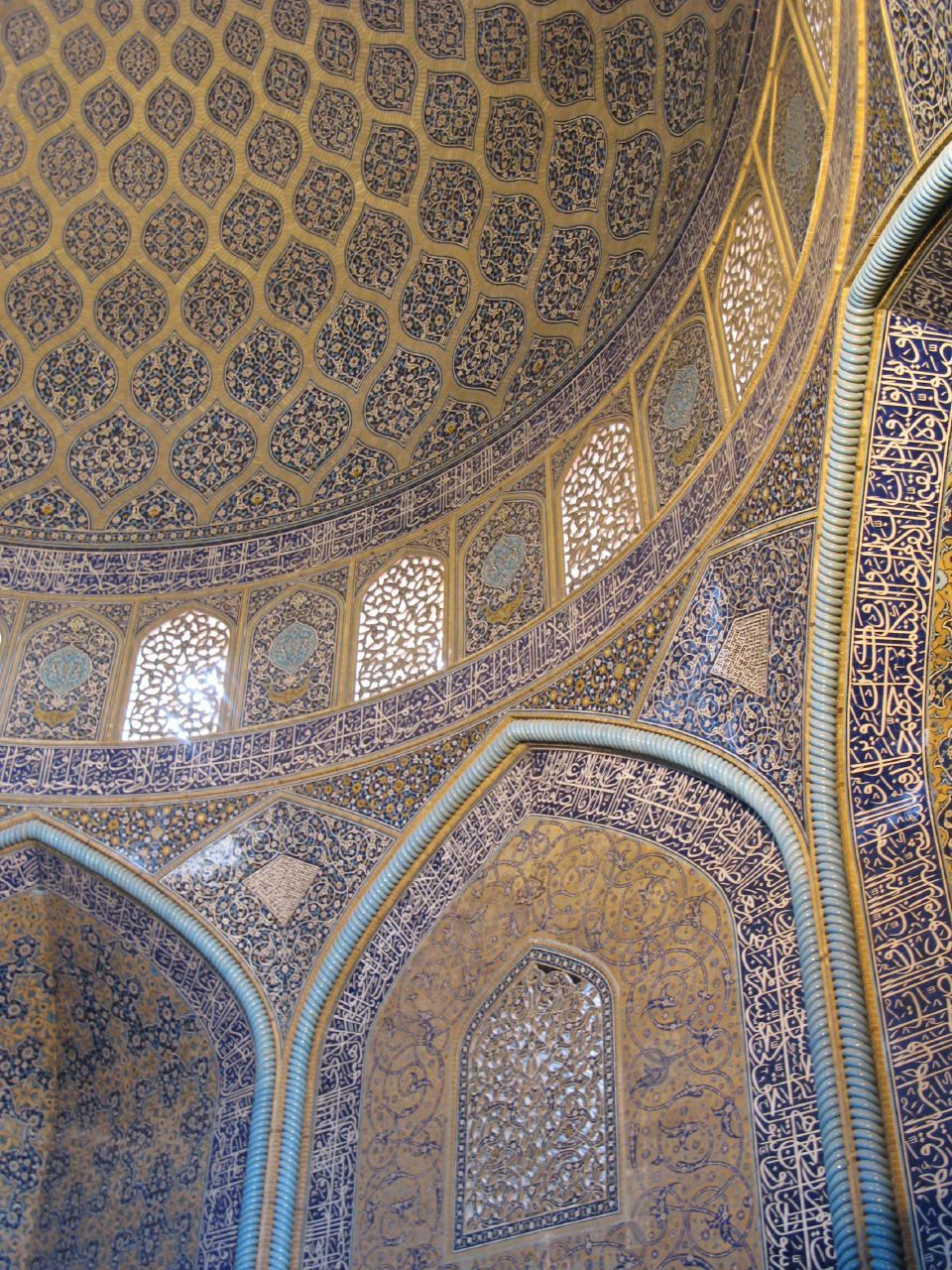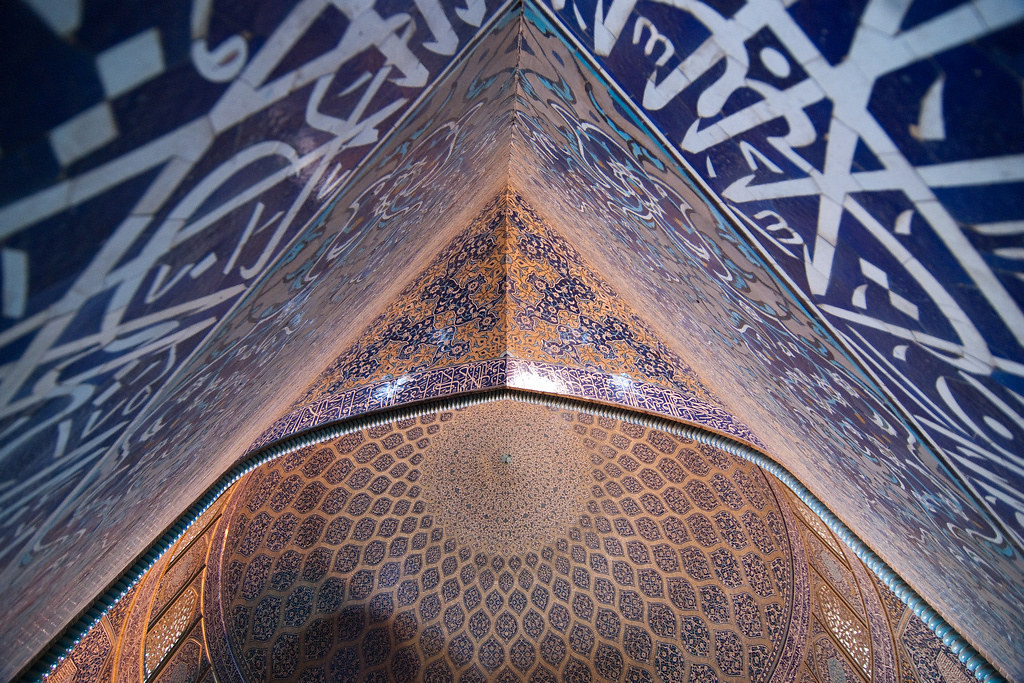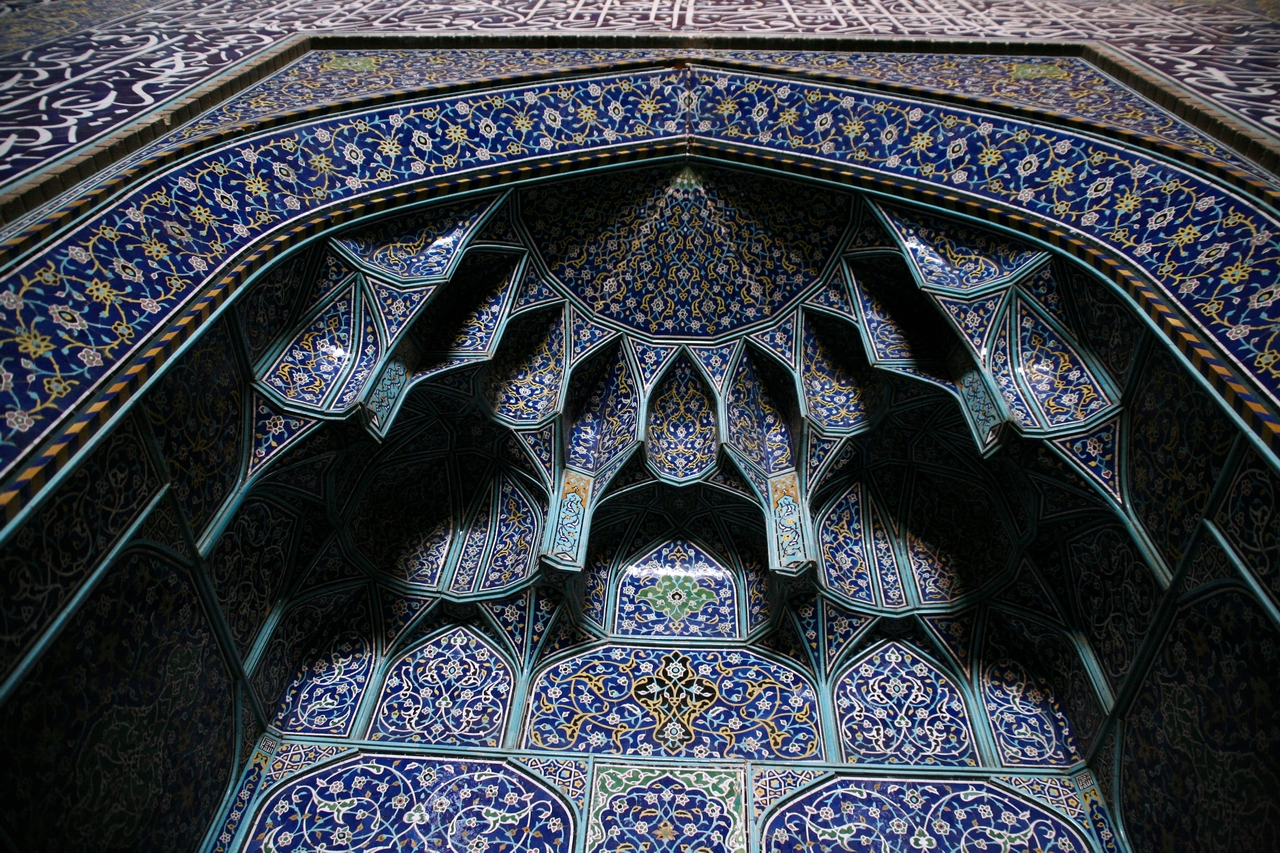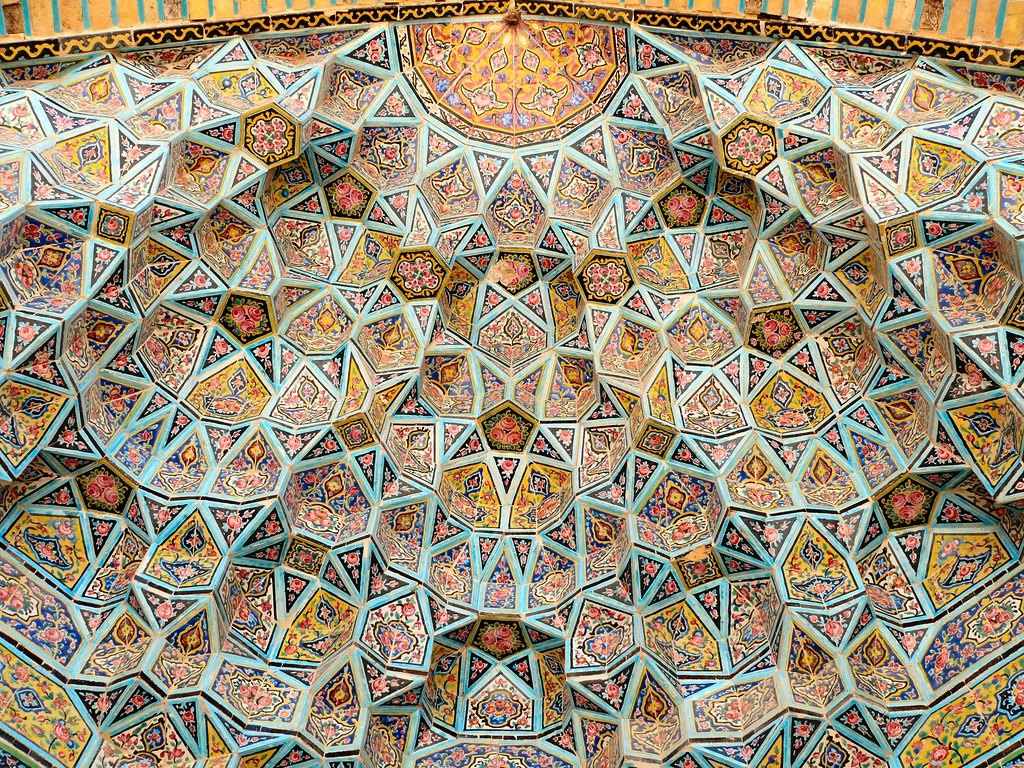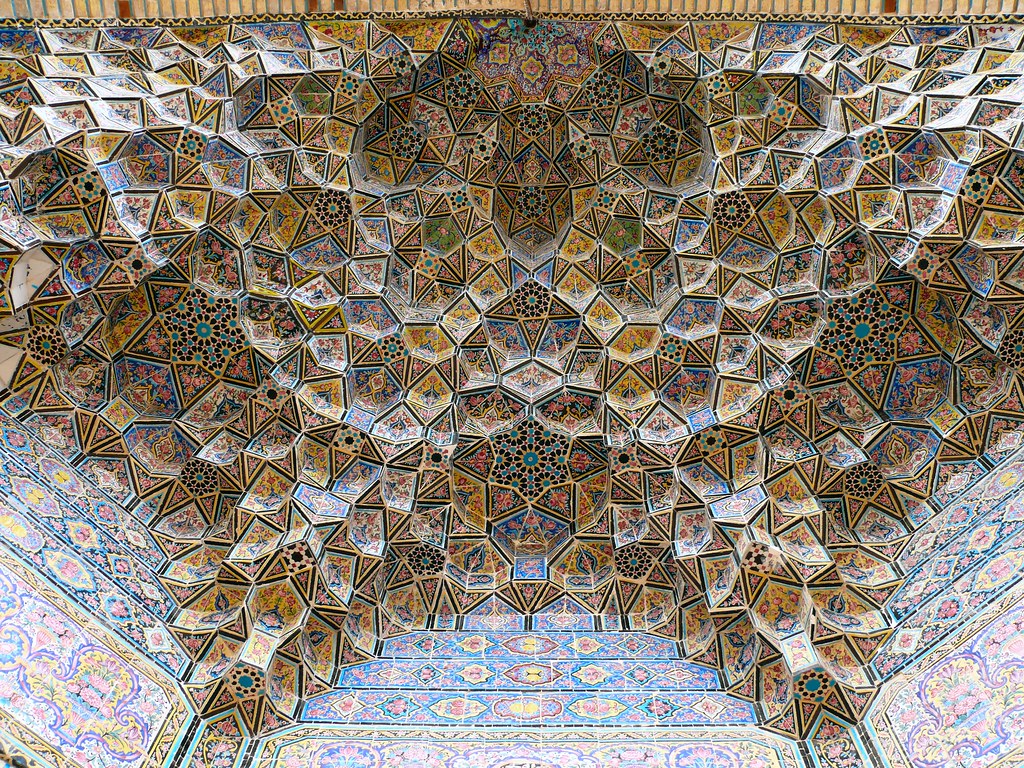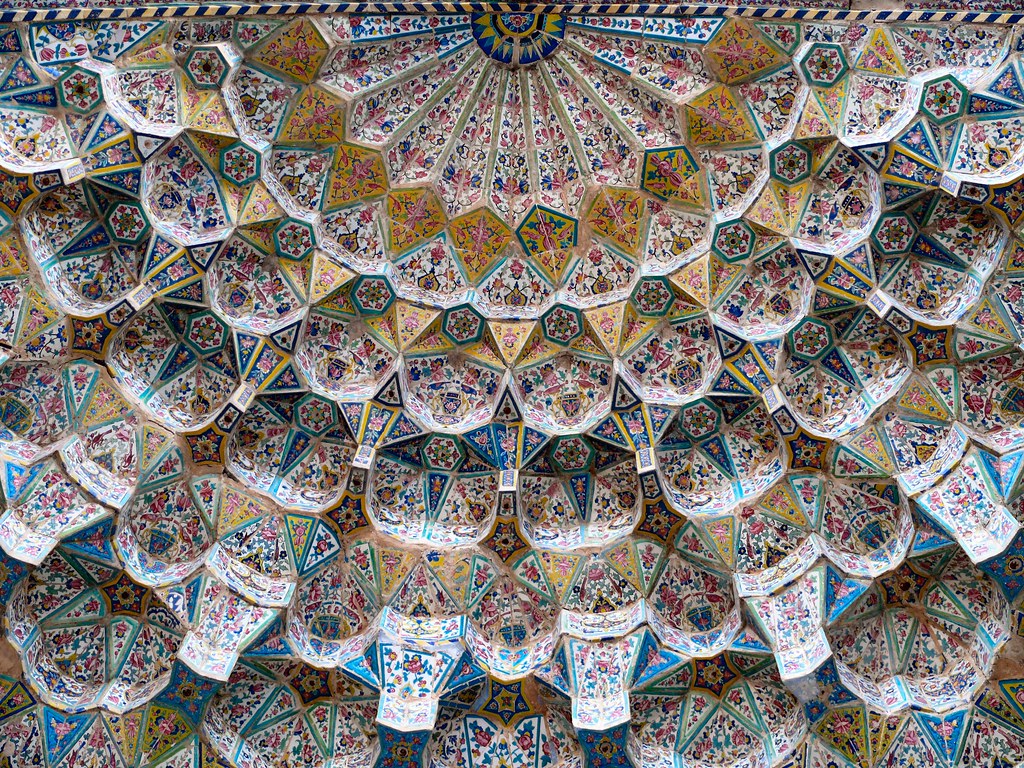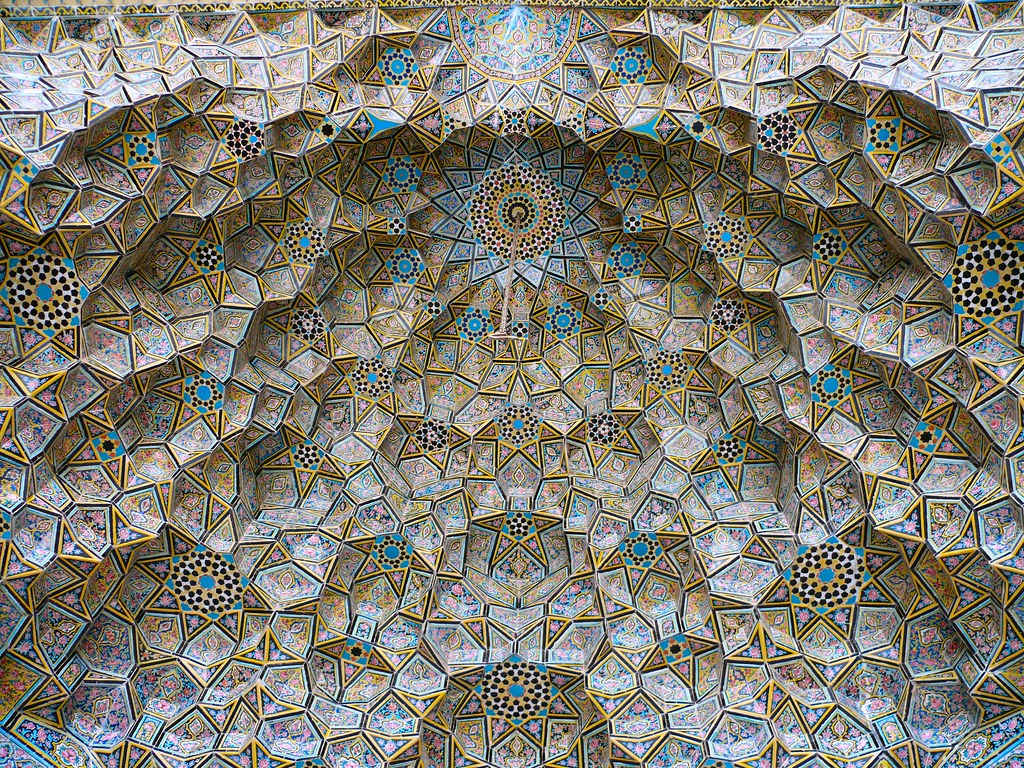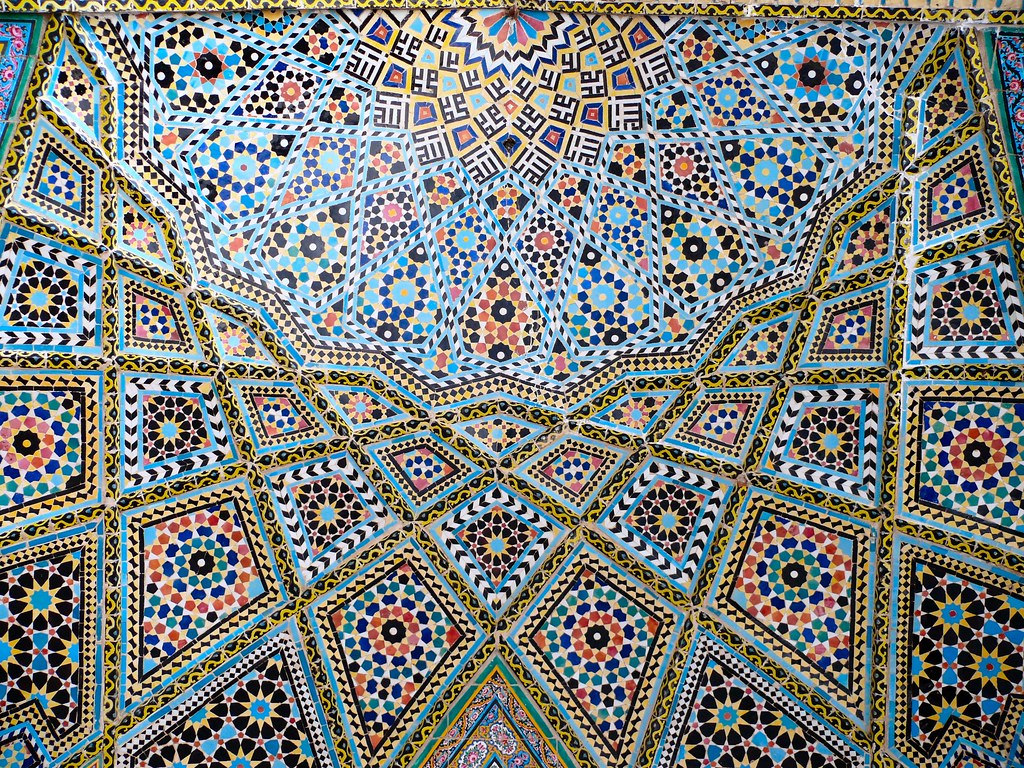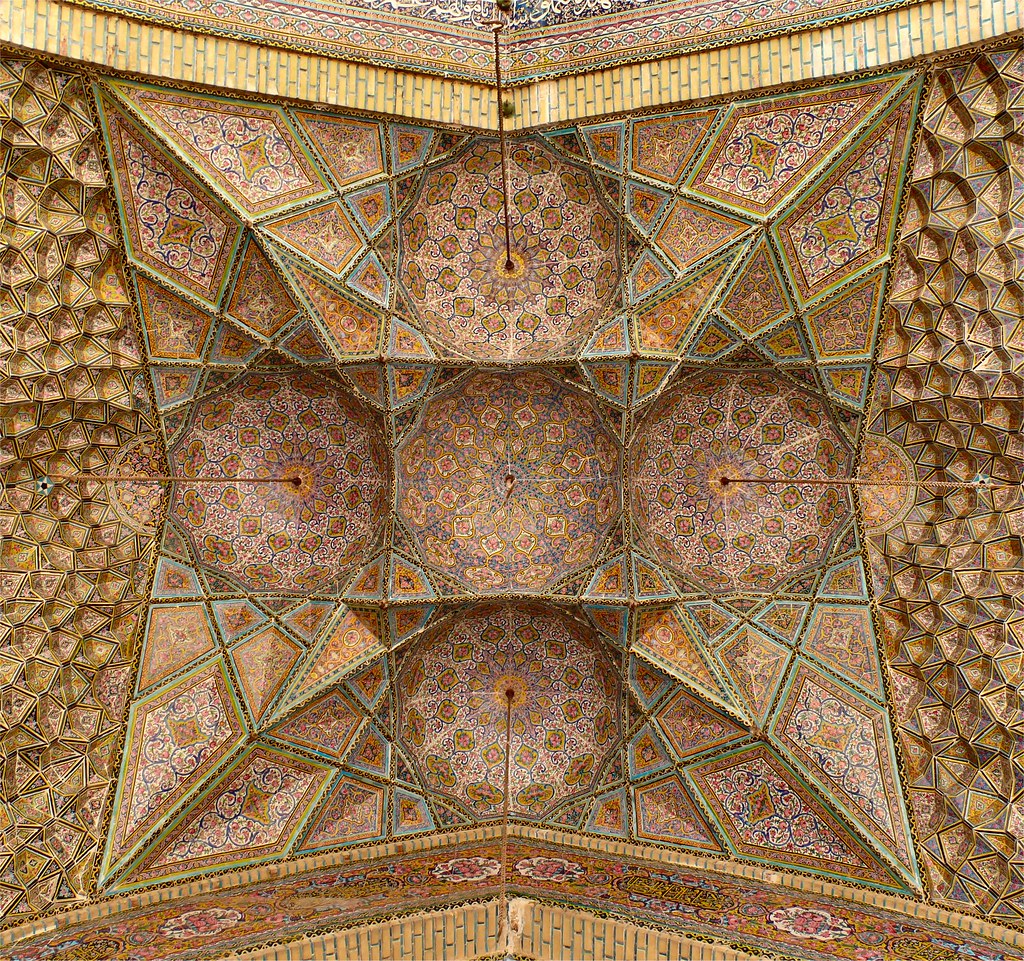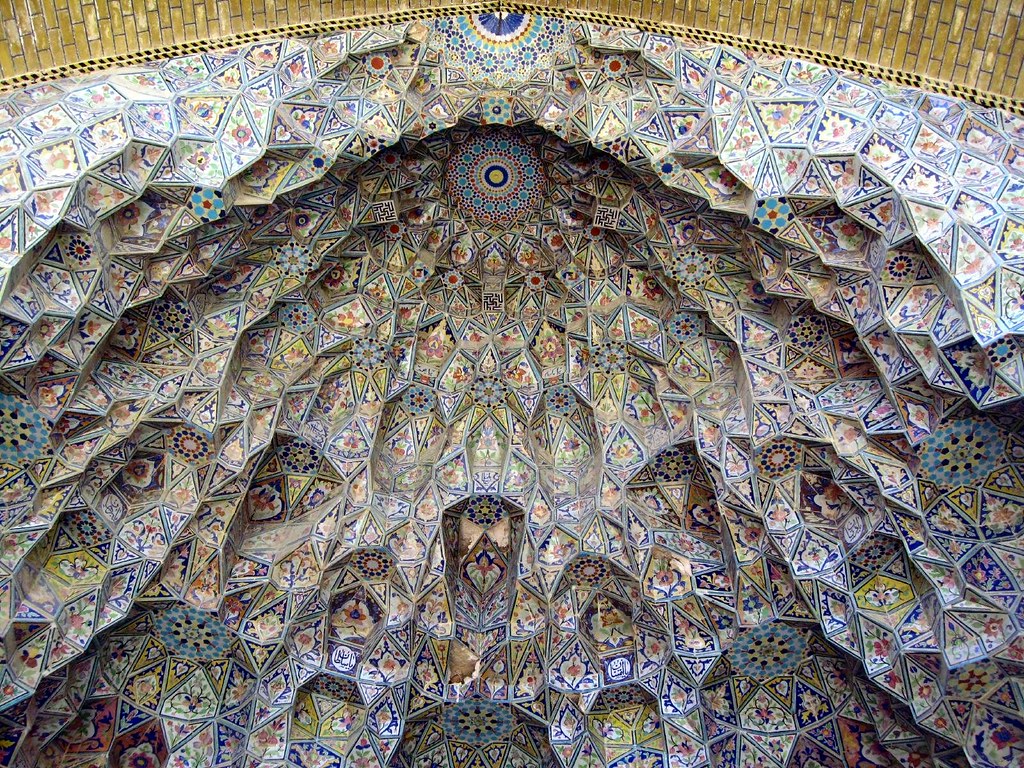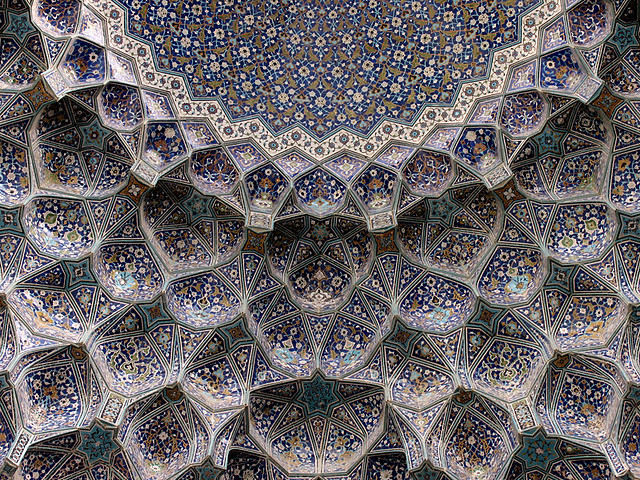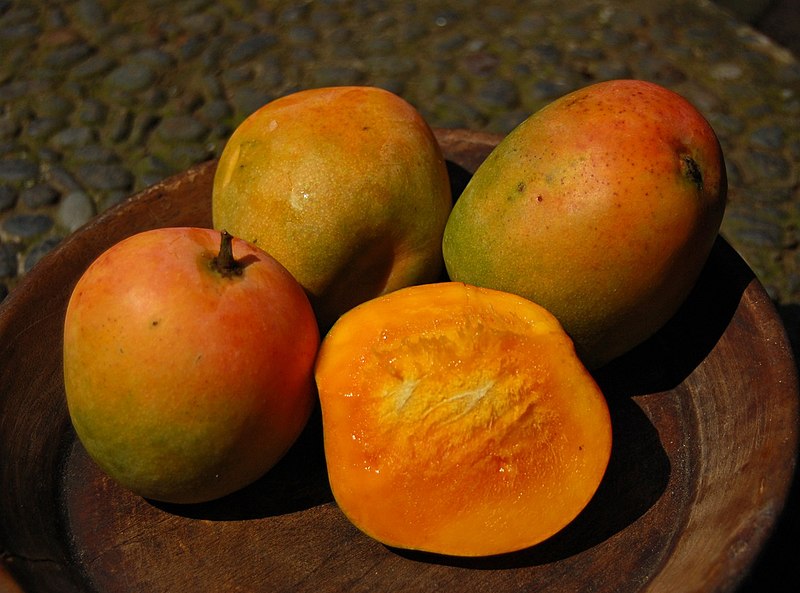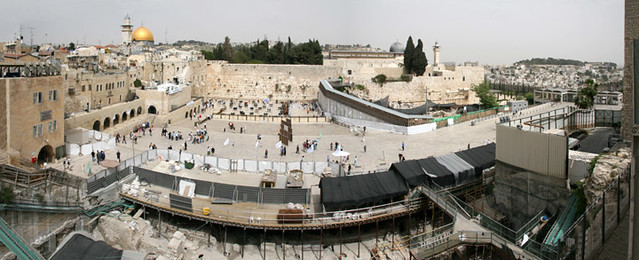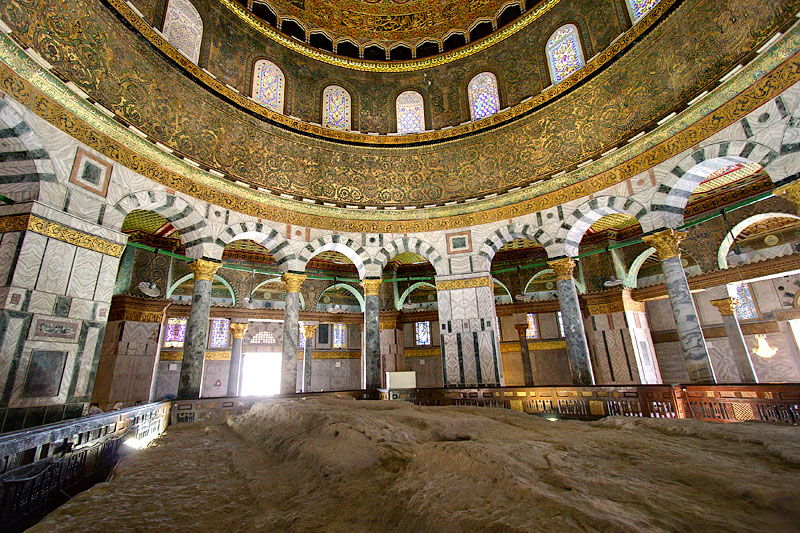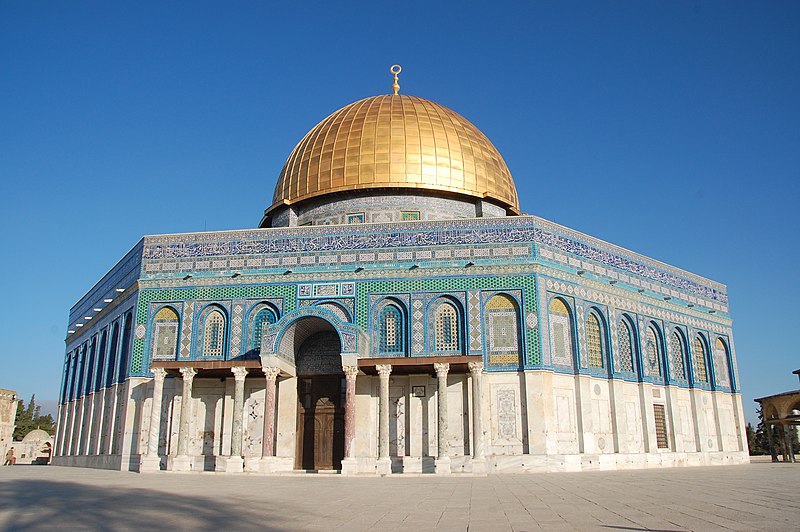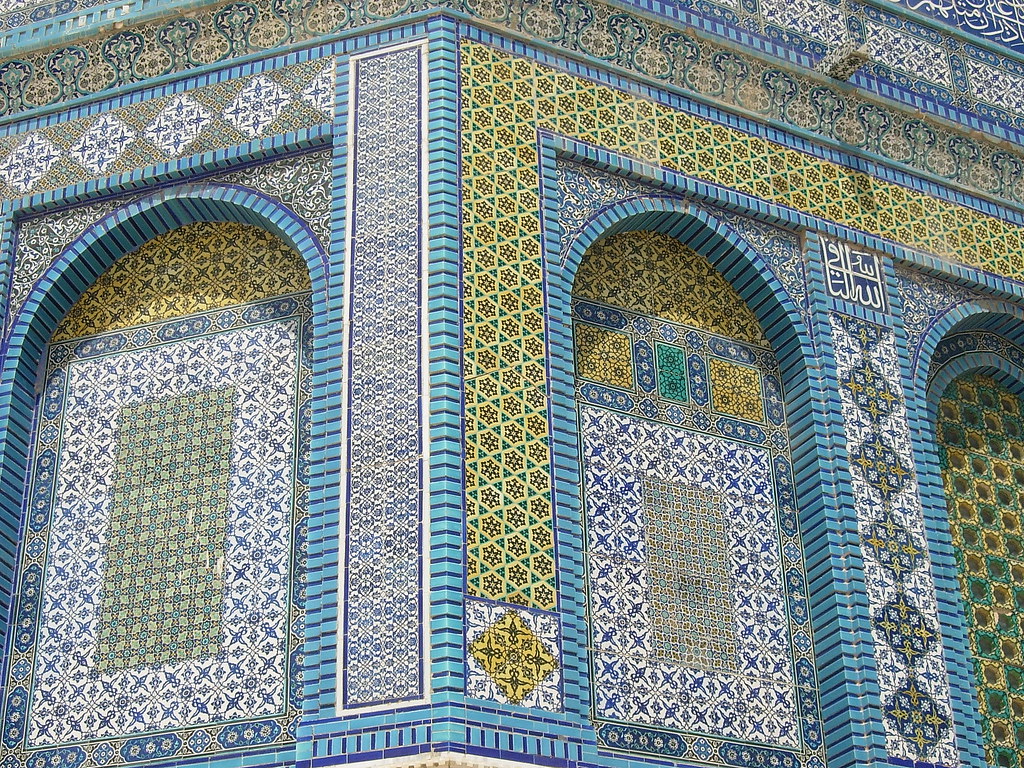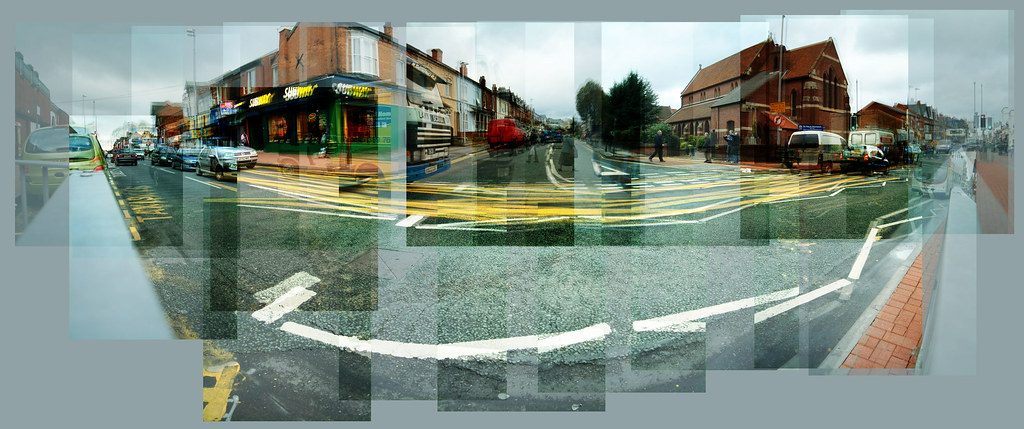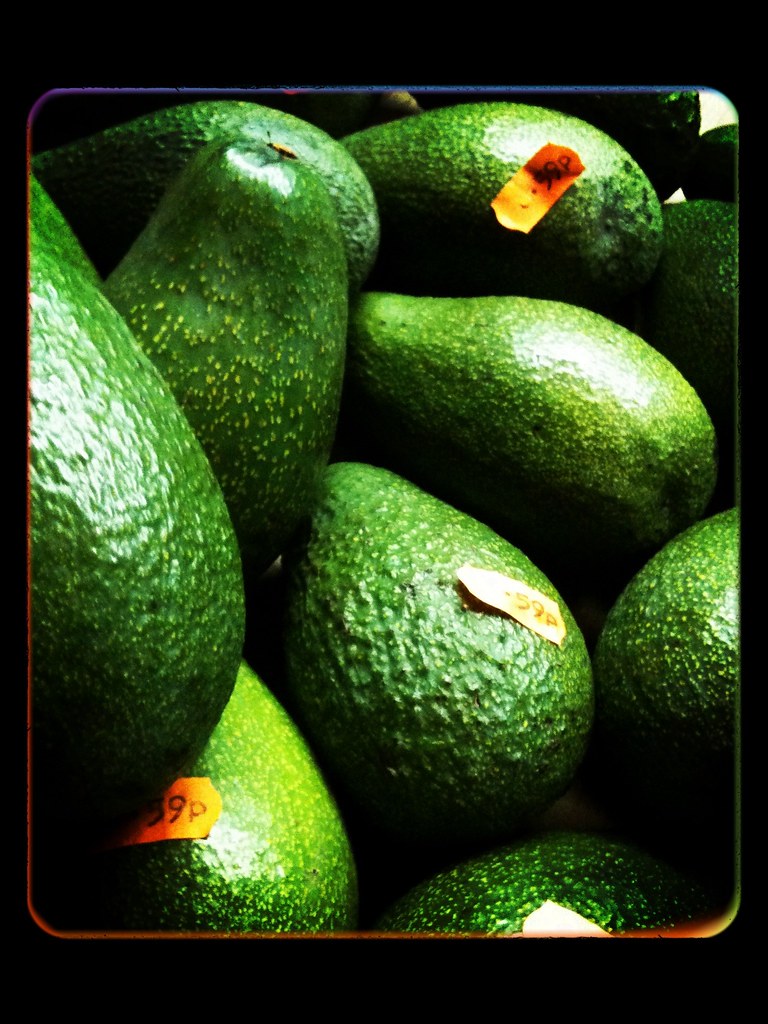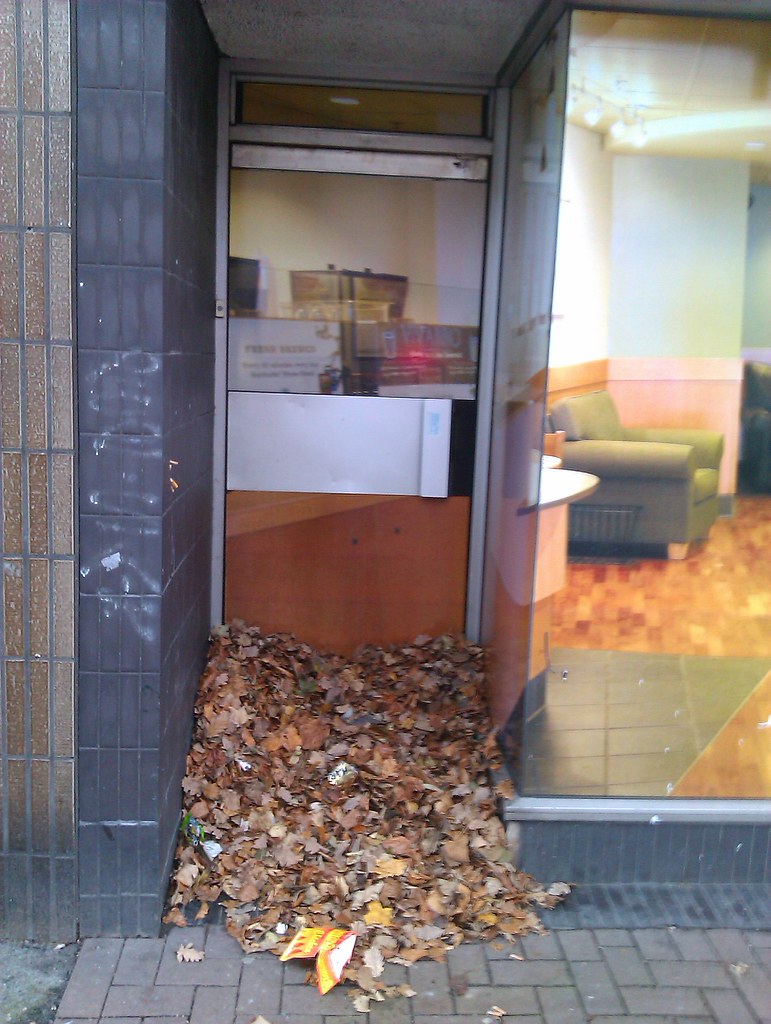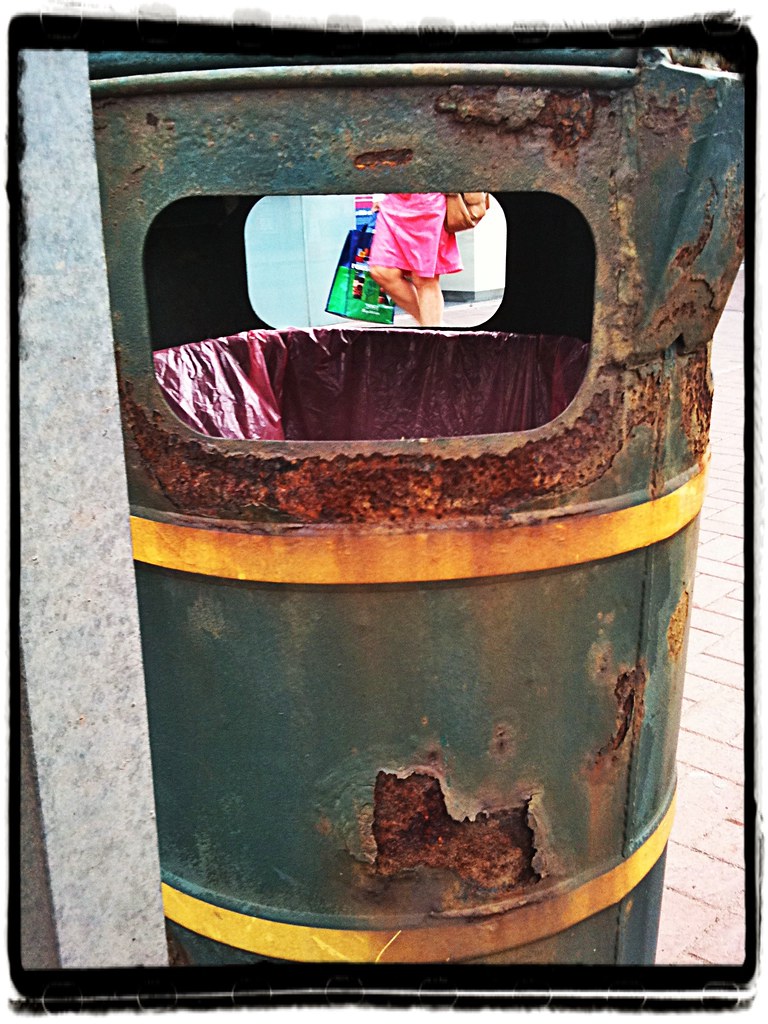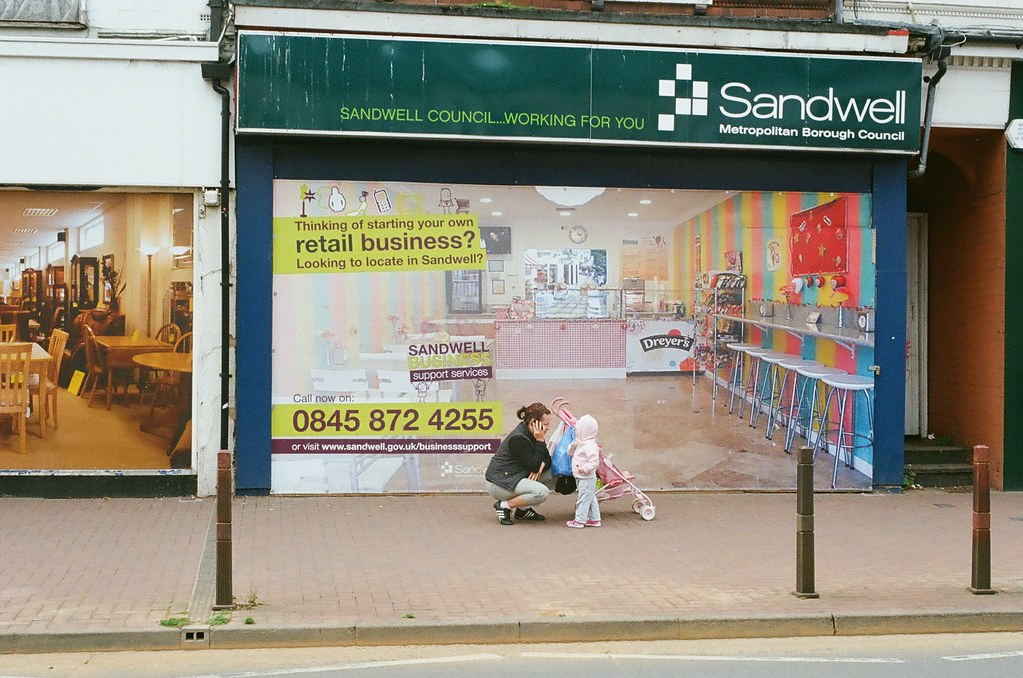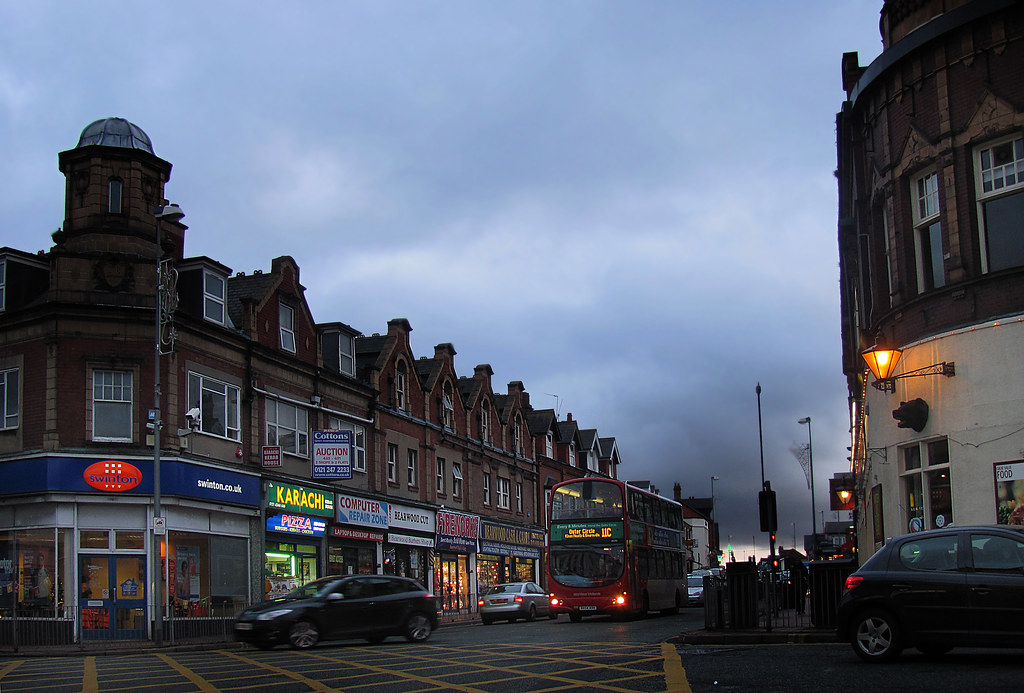.
Another glance at heaven. A vault at the Nasr al Molk mosque at Shiraz: photo by dynamomosquito, 21 April 2008
Last Friday, in the big light of last Friday night,
We drove home from Cornwall to Hartford, late.
It was not a night blown at a glassworks in Vienna
Or Venice, motionless, gathering time and dust.
There was a crush of strength in a grinding going round,
Under the front of the westward evening star,
The vigor of glory, a glittering in the veins,
As things emerged and moved and were dissolved,
Either in distance, change or nothingness,
The visible transformations of summer night,
An argentine abstraction approaching form
And suddenly denying itself away.
There was an insolid billowing of the solid.
Night’s moonlight lake was neither water nor air.
Wallace Stevens (1879-1955): Reality is an Activity of the Most August Imagination, 1954
An idea of heaven. A vault at the Nasr al Molk mosque, Shiraz: photo by dynamomosquito, 13 May 2008
A touch of paradise. A colored vault at the Nasr al Molk mosque mosque at Shiraz: photo by dynamomosquito, 5 May 2008
Facets of heaven. Front door ceiling of the Vakil mosque at Shiraz: photo by dynamomosquito, 29 April 2008
Cells of heaven. A vault at the Nasr al Molk mosque, Shiraz: photo by dynamomosquito, 29 April 2008
A glance at heaven. A vault at the Nasr al Molk mosque at Shiraz: photo by dynamomosquito, 21 April 2008
Ceiling.The ceramic tiled ceiling of a vault at the masdjed-e Nasr Al Molk at
Shiraz. The use of the yellow color was an innovation of the Zand era.
Later, under the Qajar rulers, the use of yellow was even extended to
the point it became the dominant color for the ceiling, while their
Safavid predecessors used the blue as the dominant colors: photo by dynamomosquito, 4 June 2009
Jameh-ye Atigh Mosque, Shiraz: photo by Fulvio, 7 August 2007
Imam (Shah) Mosque, Isfahan: photo by HORIZON, 18 May 2006
Facade
of entrance arcade, Masjed-e Vakil Mosque (Regent's Mosque), Shiraz: photo by Martijn.Munneke, 6 February 2009
Imam Mosque (Masjed-e Imam), Isfahan: photo by Nick Taylor (indigoprime), 28 April 2006
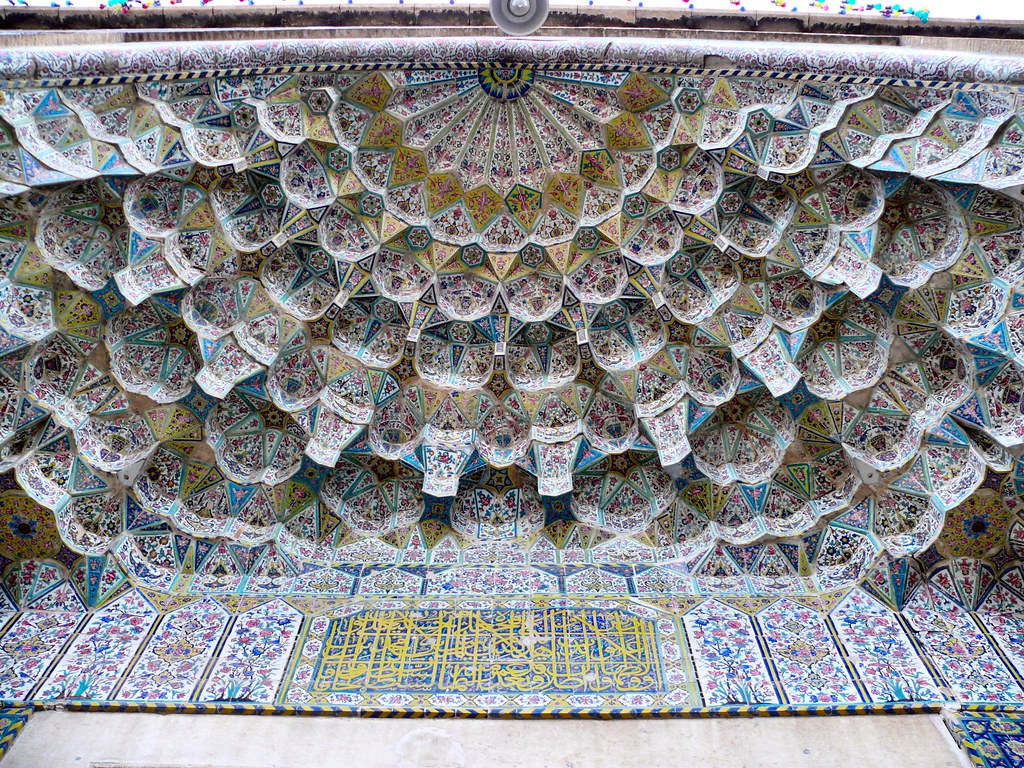
Bees' nests. Front door ceiling of the Vakil mosque at Shiraz: photo by dynamomosquito, 30 October 2008
